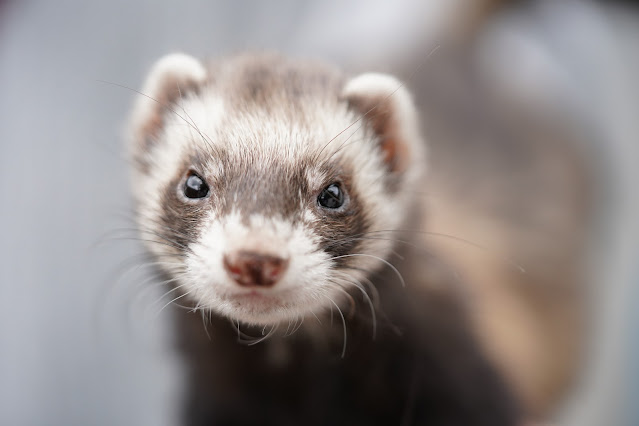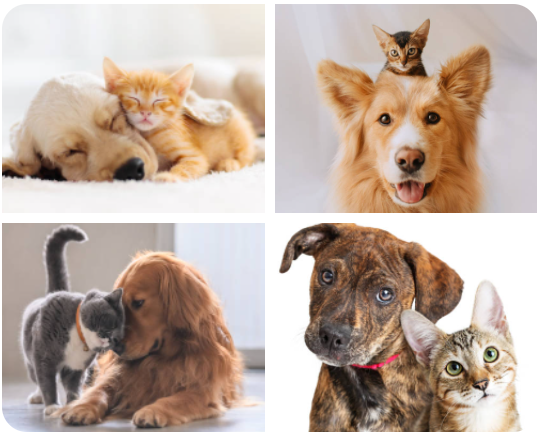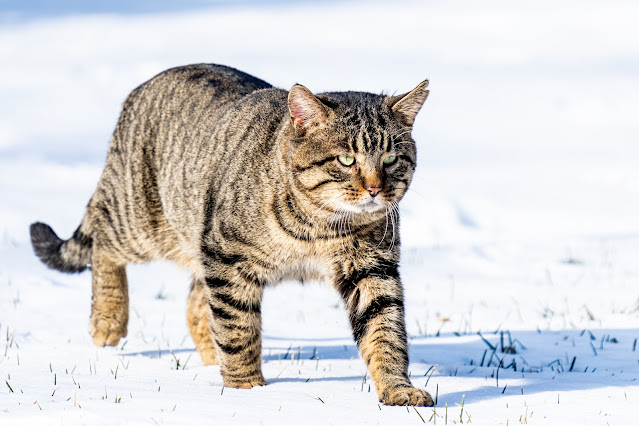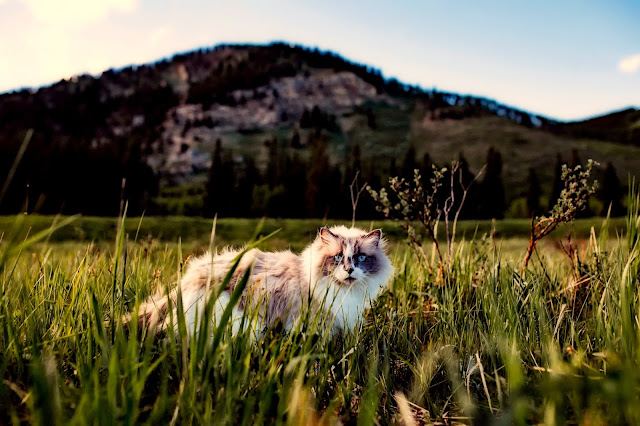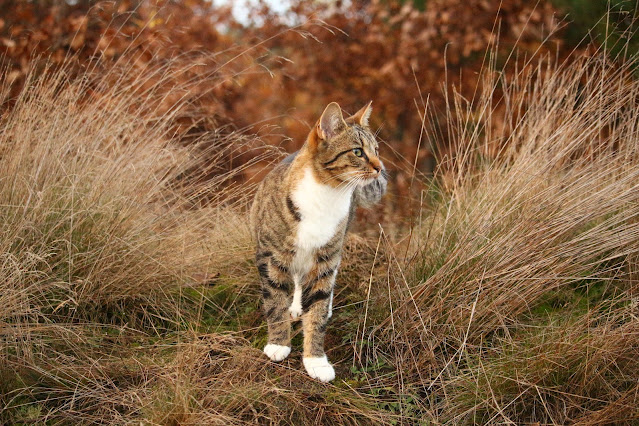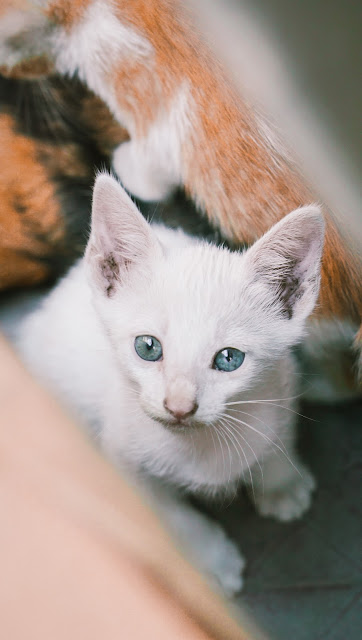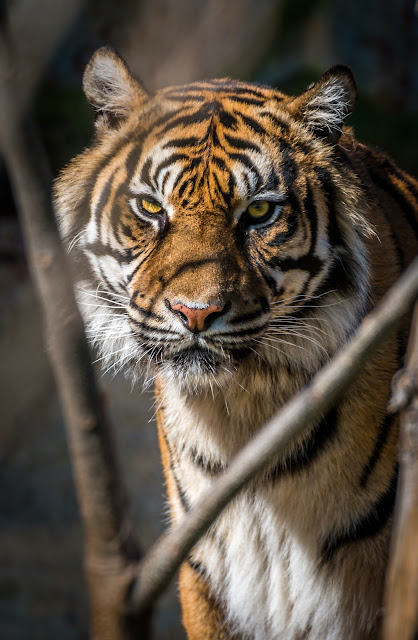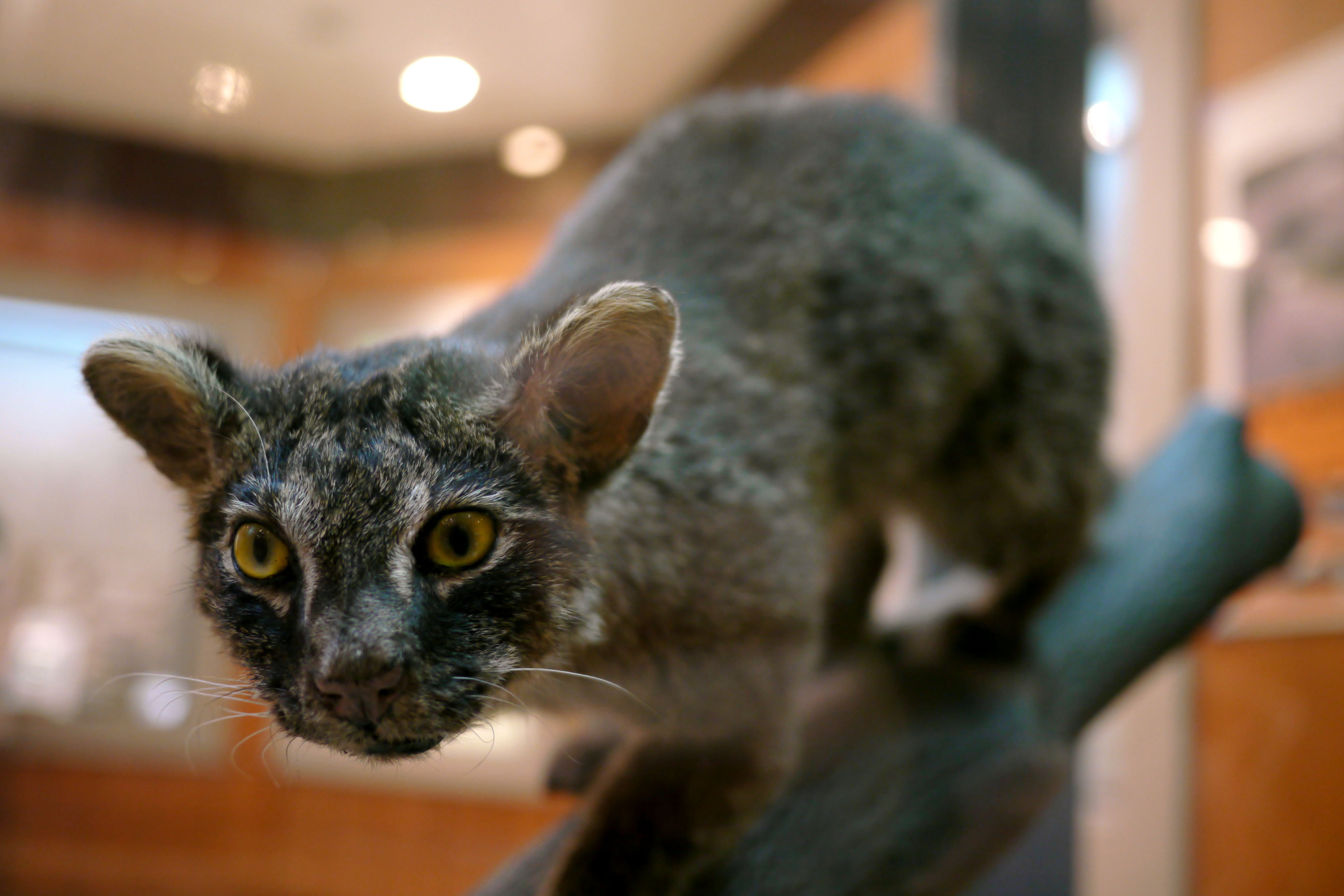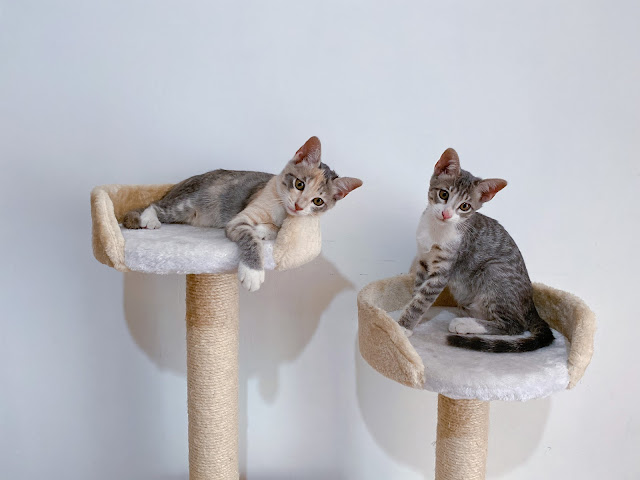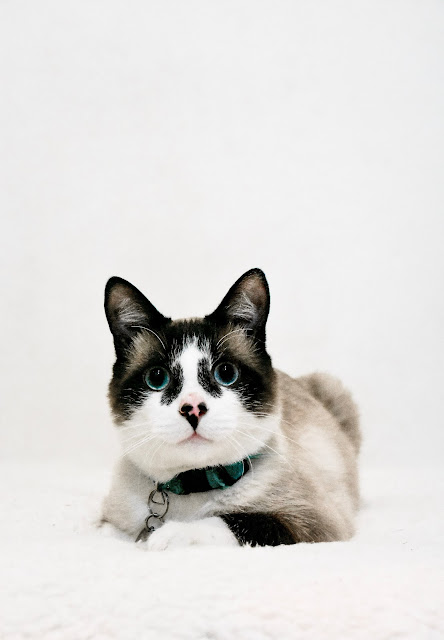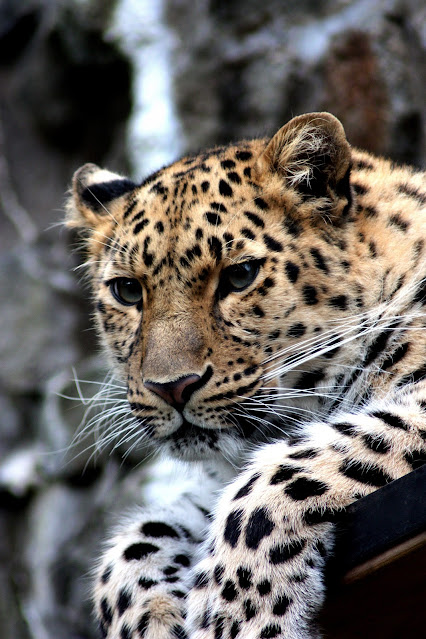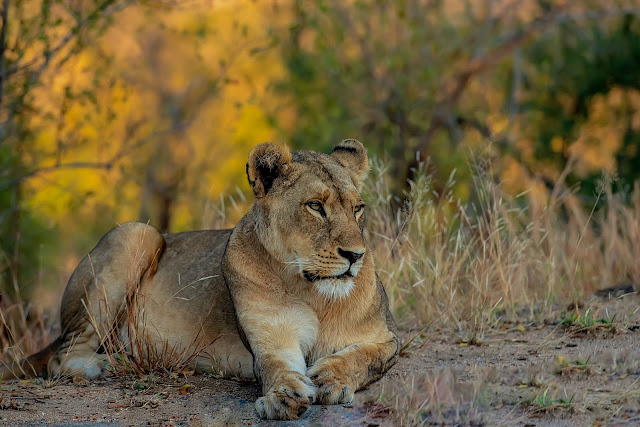This Article shows great information about wild ancestors and wild cousins of cats breeds we research so far. The following info mentioned below.
The carnivore clan
A carnivore is an animal that predominantly relies on meat as its primary food source. Dogs, bears, raccoons, weasels, mongooses, hyenas, and the Felidae family of cats are all members of the order Carnivora, which is classified as a mammal. After the age of the dinosaurs, all of these families descended from the same mammal progenitors.
The carnivore ancestors
The age of mammals began
around 65 million years ago, when the dinosaurs went extinct (give or take a
year). Creodonts, the earliest mammals, are thought to have eaten fish and
weighed less than a foot at the shoulders. To our knowledge, the creodonts were
the ancestors of all modern carnivores, including the extinct feline progenitor
Miacis, which is thought to have descended from them.
50 million years ago
Approximately
50 million years before the appearance of cats, a monster known as Miacis was
roaming the Earth. Retractable claws (a distinguishing trait of felines) were
on the creature's long, slender legs, and it appeared that these claws were
utilised to climb trees. Take note that this was a time when people were not
yet on the planet.
The infamous saber-tooths
Cats that have seber-tooth teeth, despite being
considerably larger than today's domestic felines, are a distant relative of
our feline friends (or, at any rate, of cats in general). 35 million years ago,
a sabertoothed tiger (Smilodon) roamed the continents of Europe, Africa, Asia,
and North America. It could bring down an elephant with its massive,
dagger-like teeth. Scientists believe that these cats' limited brains and big
bodies insured that they would not live indefinitely. For whatever reason, it
was supposed that sabre-toothed tigers were still roaming the wilds of the
American West prior to Thomas Jefferson's decision to send the Lewis and Clark
expedition to the region.
From whole foot to tiptoes
It existed about 20 million years ago, and like modern cats, it was a carnivore called Pseudaelurus, which walked on its toes instead of its flat feet. It had sharp, stabbing teeth and a flexible spine, much like that of a cat. From 50 to 200 pounds, the Pseu-daelurus might be expected to grow. Cats are said to have descended from this species.
The in between phase
Approximately 12 million years after Pseudaelurus, the Felis lunensis lived in Europe. Compared to Pseudaelurus, this species was smaller, but still larger than today's domestic cat; This creature featured tabby cat patterns and a thick coat, according to the scientists who studied it.
The original Sylvester
Sylvester who was the house cat's most recent ancestor? Scientists speculate that it could have been a Felis silvestris, a European wildcat, or a Felis libyca, an Asian and northern African wildcat. In the minds of some experts, the two species are distinct subspecies of one another. Although this wildcat breeds was and is close in size and shape to today's domestic cat, it also possessed tabby-like colours and patterns. You now know where the name "Sylvester" for the cartoon cat came from.)
Roaring and non-roaring
The Felidae family includes the cat breeds genera Felis and Panthera. Feline species such as Felis and Panthera tend to be more compact in size. When it comes to roaring, Felis and Panthera cats have distinct differences. Your pet is, of course, a member of the Felidae family. There's no denying that cats as pets are popular due to their resemblance to majestic felids like lions, tigers, and leopards in terms of shape and behavior.
Felis, feline, etc.
Felis is the Latin word for cat, and it was used by
the ancient Romans to describe a feline. Originally, the term "felis"
referred to any yellow-colored carnivore, including rodents like weasels and
polecats. The Latin cattus was being used in place of felis by the year 200 or
so, and cattus referred to cats solely.
Everywhere but Australia
As a result of its geographical isolation, Australia's fauna differs significantly from that of the rest of the world's continents. Marsupials, mammals that give birth to their young in pouches, make up a large portion of the mammals in the area. However, there are a number of carnivorous marsupials, such as the kangaroos and koalas. They fill a void that cats occupy on other continents. The deadly marsupial "tiger cat" of eastern Australia is not a legitimate cat. There were no real cats in Australia before Europeans arrived.
Felis catus in the wild
The term feral is sometimes used to describe cats, dogs, pigs, and other animals. When a domestic animal returns to its natural habitat, it is said to have "gone native." "First-generation feral," or the offspring of two feral parents, are two possible explanations for this behaviour. Like any well-loved house cat, wild cats are members of the same genus, Felis catus. Urban areas have a large number of wild cats that are thriving without human intervention. Feral cats can readily transmit rabies to one other or to skunks or raccoons since they are not vaccinated.
“Cats,” but not really
Cat-named animals aren't actually linked to cats in any way. Polecat is also a name given to skunks, while in Europe it refers to a weasel-like creature, however neither "polecat" is a true feline. Despite common misconceptions, neither civets nor genets are members of the Felidae family, which includes the cats we know and love.
The last to be domesticated
As a result, cat breeds owners may worry if any cat
can ever be truly domesticated. Cats, at least according to fossil evidence,
were among the last domesticated animals. To put it another way, early humans
found the dog and horse useful for hunting and transportation, as well as
cattle, swine, and sheep valuable for food and clothing. Evidently, the
potential of cats as rodent exterminators was not fully appreciated by our
ancestors' species.
The Small Wildcat breeds Cousins
Silvestris, still around
There is no doubt that Felis silvestris was the ancestor of today's domestic cat, and the wild silvestris is still thriving. This section explains the numerous subspecies. All of them resemble our house cats, but as you'll see, there's a wide range of variation in their ability to be trained. All silvestris wildcats have greater brains than domestic cats, which is worth noting.
The Scottish wildcat breeds
It's likely that the Felis silvestris grampia formerly roamed all of Britain, but by the 1800s, it had been confined to Scotland, where it's still found, albeit in smaller numbers. Though similar in appearance to tabby cats, the Scottish wildcat has a larger head than most domestic cats and a much shorter tail.
The Spanish wildcat
A wildcat that looks a lot like the Scottish wildcat, but has a darker coat, is Felis silvestris iberia. It's heavier than the average house cat, just like its Scottish ancestor. In the past, numerous wildcats have been hunted and killed for their fur because of their gorgeous striped coats.
The European wildcat
It used to be common throughout Europe, but now it's almost extinct due to a lack of prey. The species has rebounded, particularly in Germany, Slovakia, and the Czech Republic over the last few decades. The tail of this wildcat is notably shorter than that of a domestic cat, despite its sleeker and more housecat-like appearance compared to the Scottish and Spanish subspecies. Because they are wary of people, European wildcats can't be domesticated. The only human contact they have is when they attack chicken coops, which does not make them popular with the general public.
The African wildcat
The Felis silvestris lybica is a widespread African feline, but it is now extinct. With characteristic stripes on the legs, it is gray-brown in hue. A silvestris wild cat breeds has yellow eyes instead of the green eyes found in other silvestris cats. The African wildcat, when raised in a zoo, can be domesticated.
The Indian desert cat
In contrast to other silvestris wildcats, the Felis
silvestris ornata has spots rather than stripes. It covers a large area, from
southern Russia to the central Indian state of Uttar Pradesh. It's a little
smaller than the wildcats we've just talked about.
Can Felis silvestris mate with Felis catus?
Is it possible? Definitely, but you'll probably be
disappointed. Even in cases when a European wildcat tom impregnated an American
domestic female, this is the case. There are two ways in which a European
wildcat's offspring will immediately show its wild nature: escaping the human
home, or becoming so irritating that the humans will be happy to let it go.
The U.S. wildcat
The bobcat (Felis lynx), which can be found from Canada to Mexico, is the most commonly encountered wild cat in the United States. Short-tailed house cats, as the name implies, are stocky, grayish-brown, and thick-haired, with markings on the lower half of their bodies. This is not the case. The ends of the rather large ears have distinct tufts, and the cheeks of males are extremely shaggy. Though cautious and rarely seen, the raspy meows of bobcats can be heard. In theory, they may cross-breed with domestic cats, resulting in the Pixie-bob.
Pet otter?
However, there is some evidence to suggest that Native Americans had domesticated a native cat known as the jaguarundi before Columbus arrived. From Arizona to Argentina, this long-bodied brown cat can still be found. The "weasel cat" or "otter cat" is a nickname given to this species because of its slender build and otter-like head. The native peoples of South America tamed it and employed it to kill rodents prior to the arrival of Christopher Columbus. It's unclear if they treated it like a pet, as Europeans and Asians do with their house cats.
The ultimate fur cat
Sadly, the gorgeous spotted ocelot (Felis pardalis) found over much of the tropical Americas was targeted for its fur by hunters. Public perception has changed, and furs of all kinds are no longer worn, so wild populations may be on the rise. An ocelot spends much of its time in the treetops, where it hunts small mammals, birds, and reptiles at night. It used to be found in the United States as far north as Arkansas.
Little spotty
Margays
(Felis wiedi), a near relative of ocelots, are only about two feet long,
including their tails, and can be considered a mini-ocelot. To put it another
way, this gorgeous spotted creature is the size of a domestic cat. A rare
sighting in southern Texas can be seen anywhere from Mexico to Argentina.
Why “tiger,” when it’s spotted?
There
are various names for the species Felis tigrinus, including tiger cat, but it
is spotted, not striped. It is smaller than a house cat and is also known as
the little spotted cat and the oncilla. Although it may be found throughout
Central and South America, it has become extinct as a result of fur trapping.
High altitude American
Mountain cat (Felis jacobita) dwells in the Andes Mountains at an altitude of up to 16,000 feet above sea level, which is where its name comes from. To keep warm at night, this greyish cat has thick, shaggy fur because it lives at a high altitude. The wide stripes on the tail give it the appearance of a raccoon's tail. It's about the size of a domestic cat.
Smallest of all
The kodkod (Felis guigna) of Chile and Argentina is smaller than the house cat, never weighing more than seven pounds. It has a speckled coat like many other wildcats in South America. Birds and reptiles are its primary prey, although it has a rep for killing poultry, making it unappealing to people.
Made for the desert
Sand cats (Felis margarita) of Africa and Asia aren't the typical wildcats we're used to seeing, but they're perfectly suited to their desert habitat. It appears to acquire all of its hydration from the rodents it eats in the desert, so it doesn't require much. It has thick hairs between the pads of its paws to keep it from slipping into the sand.
Webbed feet, yes
Sand cats (Felis margarita) of Africa and Asia aren't the typical wildcats we're used to seeing, but they're perfectly suited to their desert habitat. It appears to acquire all of its hydration from the rodents it eats in the desert, so it doesn't require much. It has thick hairs between the pads of its paws to keep it from slipping into the sand.
Europe’s bobcat
The lynx may be a subspecies of the American bobcat, or it may be a near relative of the American bobcat. A shaggy coat, short tail, and tufts on the ears make it look like its American cousin. Throughout the past, lynxes were plentiful throughout Europe, but they are now extinct in most of the continent. Even in the remotest parts of northern Europe, it is still possible to spot it.
The crab-eater
There are only a few Iriomote cats left on the Japanese island of Iriomote, therefore it's no surprise that they weren't discovered until 1967. Nighttime hunting includes stalking birds and small mammals, as well as foraging for crabs at the water's edge.
Compressed head
If you had a thick-haired house cat with a compressed skull and ears that were positioned quite near to the head, you would get the idea. Felis manul, the Pallas-cat (Felis manul), is a mountain cat that can be found in Iran and China's western mountains. In these frigid climates, the cat's coat is extremely thick and insulating.
Distinctive and tamable
The Persian lynx, sometimes known as the caracal,
can be found throughout Asia and Africa, where it feeds on gazelles, small
animals, and birds. Because of the long black tufts of hair on each ear, no
other cat looks quite like it. A tame reddish-brown cat, somewhat larger than a
fox, can be trained to hunt small antelopes and deer in certain places.
A truly inappropriate name
Despite its common name, the jungle cat (Felis chaus) is more likely to be found in Asia and northern Africa's wide countryside and marshlands.... Ancient Egyptians discovered mummified jungle cats, indicating the cat could be trained to some degree. Smooth, grayish-brown fur covers the gorgeous cat's body.
The Big Cat Cousins
Only the size is different . . .
Cat enthusiasts are naturally drawn to the larger wild relatives of the Felidae family because of their resemblance to the domestic feline. House cats have many traits with their wild counterparts, and vice versa; lions, tigers, and leopards, which have long been admired by humans for their regal appearances, may be found in domestic cats.
The big guy, Leo
Even though lions (Panthera leo) aren't as massive as tigers, they've had the greatest impact on humans because of their "kingly" appearance. Africa and a little portion of India are the only places left in the world where you can see lions today. One of the few feline species to form social groups, the lion lives in prides of around a dozen individuals, most of which are females, with one dominant male.
The big spotty
Because it can be found throughout Africa and most of Asia, the leopard (Panthera pardus) is more dangerous than the lion. Leopards typically have a fawn coat with black spots, but the variations in hair colour and spot pattern have led some to believe that there are multiple species of leopard. Leopards are excellent swimmers and have no fear of the water. Leopards are commonly referred to as panthers in India, where the term "pard" was used for centuries. In addition to antelopes, leopards also enjoy eating dogs (both wild and tame) and baboons.
Panther, but really a leopard
Color morphs of the leopard provide the inspiration for the magnificent black panther found in Asia. A black panther appears jet black due to its hair and markings, which are both black in hue. In fact, from certain vantage points, the patches are quite visible.
The claws out cat
Cheetahs (Acinonyx jubatus), the
fastest land animal, rely on speed to take down their prey, as you undoubtedly
already know. The cheetah is the only cat that does not have retractable claws.
Lions and leopards share the same hunting territory, but cheetahs prefer to
hunt in the early morning and early afternoon, when lions and leopards are most
active. In pursuit of their prey, cheetahs strike quickly and decisively with a
bite to the throat.
The tame one
As has already been mentioned, cheetahs are unique felines in that they have been domesticated and trained to hunt. Cheetahs, which can be found in Africa and most of Asia, were domesticated in India long before the arrival of Christopher Columbus. Hunters would blindfold them and release them when they saw their target. There are only two other cats that can be completely domesticated by humans: the domestic cat and the caracal. Aside from the fact that Cheetahs are spotted, they have been described to as "hunting leopards" in the past, and it was thought that they were hybrids of lions and leopards.
Ligers or tigons, but sterile
If you took the skins off of a lion and tiger, it would be difficult to tell the two different, say scientists. Both species are sufficiently close that they can and do occasionally mate (but only in captivity, never in the wild), giving rise to hybrid offspring dubbed "ligers" or "tigons." However, because they are virtually always sterile, these hybrids are unable to reproduce.
The American big spotty
If you think of the jaguar (Panthera onca) as a leopard in the United States, you'd be right. The jaguar inhabits swamps and jungles throughout South America, Central America, and Mexico, and is one of the most widespread cats in the world. It used to cover large swaths of the country. Historically, Native Americans were terrified of jaguars, and with good reason: they have been known to assault and eat humans. If you're looking for a big cat, this is it.
The biggest
As the world's largest feline (Panthera tigris), this species is restricted to Asia. Although we assume that all tigers are orangey in colour, the truth is that the hues of tigers vary widely depending on where they live. There are some almost-white tigers in Russia and northern China. A male tiger can reach a maximum weight of 500 pounds and a shoulder height of 5 feet. Unlike lions, which have stunning manes, tigers have long spreading hairs on their cheeks, a distinguishing feature of older male tigers. Tigers can swim well, but they rarely, if ever, scale trees.
True man-eaters?
Tigers, as the world's largest cats, have been known to take down enormous prey such as deer, cattle, and even wild hogs. Peacocks are also a favourite of theirs. Sadly, tigers have been known to attack and kill humans, however this is mainly the case with elderly or crippled tigers. Tigers have been hunted to the brink of extinction because of their reputation as man-eaters.
The monkey-eater
There are a lot of big dots on the
clouded leopard's brown coat, Neofelis nebulosa It's a tree-dweller, and its
preferred foods include monkeys, squirrels, and birds, all of which may be
found in the trees of India and Southeast Asia.
Cougar, puma, etc.
Puma (Felis concolor) is a gorgeous, tawny-haired American species (Felis concolor) that goes by many many names—mountain lion, panther, deer tiger, Mexican lion, to name a few. Scientists like to call it a puma, though. South Canada to the southern tip of South America are all within its range. Many parts of the western U.S. are home to this invasive species, which has gained notoriety by preying on cattle, despite the fact that its preferred target is deer. (Catching animals enclosed in a fence is much easier than doing so with deer.) It is the second-largest cat in the Americas, after the jaguar. 275 pounds is the maximum weight for an adult guy.
The Sunshine State cat
The Florida panther is the state's official animal, and it is a critically endangered species. As to whether or not panthers are an entirely distinct species, scientists are debating. Although it resembles a cougar in general appearance, the Florida panther has a kinked tail, white patches, and a characteristic swirl of fur along the middle of its back that set it apart.


_3_(15420506196).jpg)




